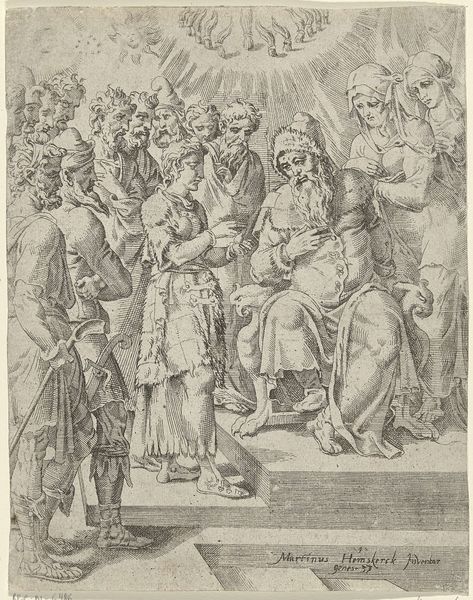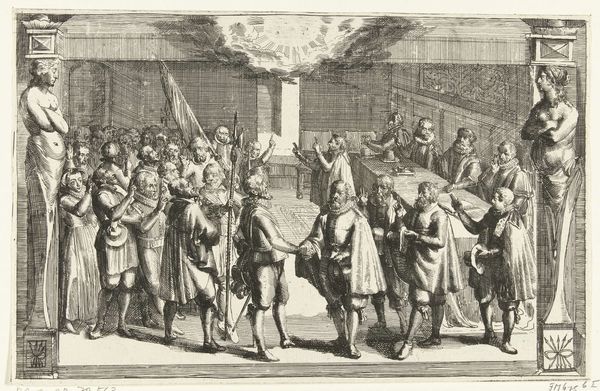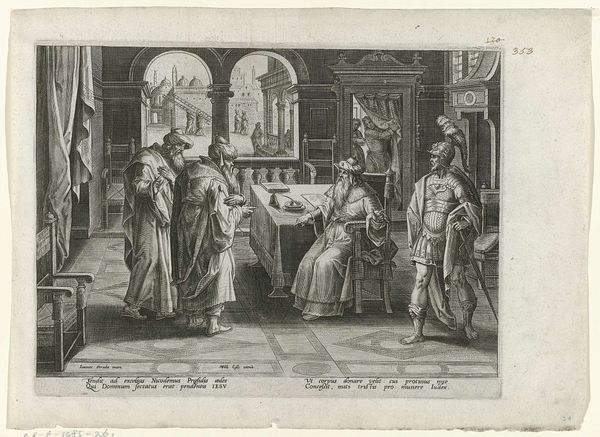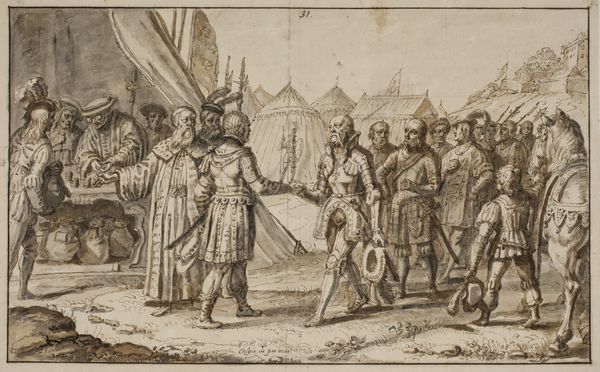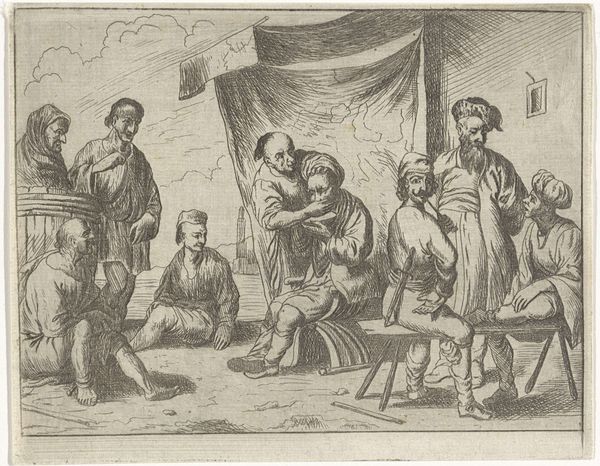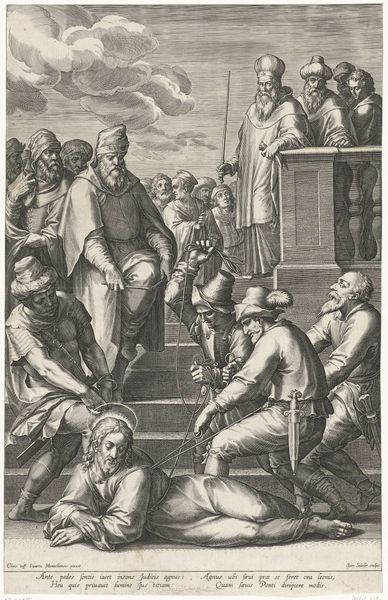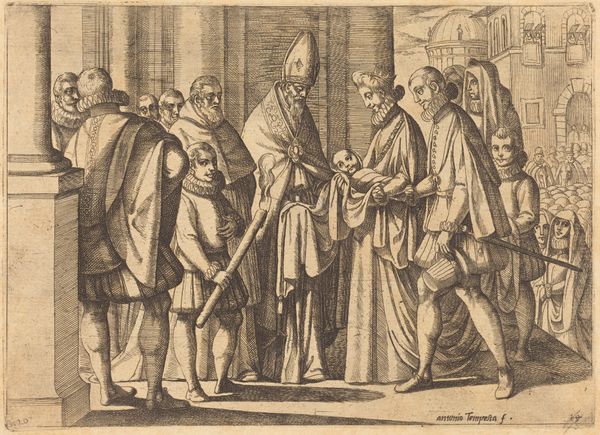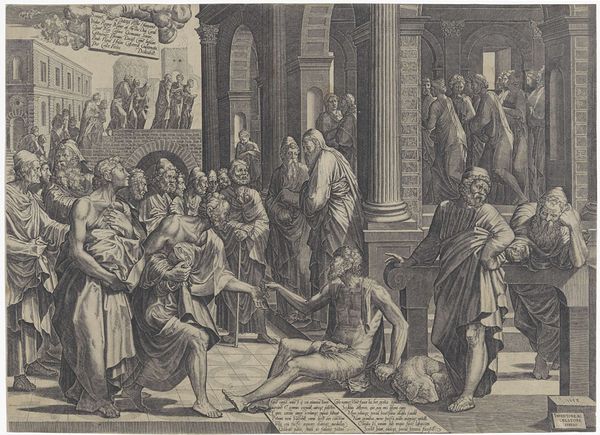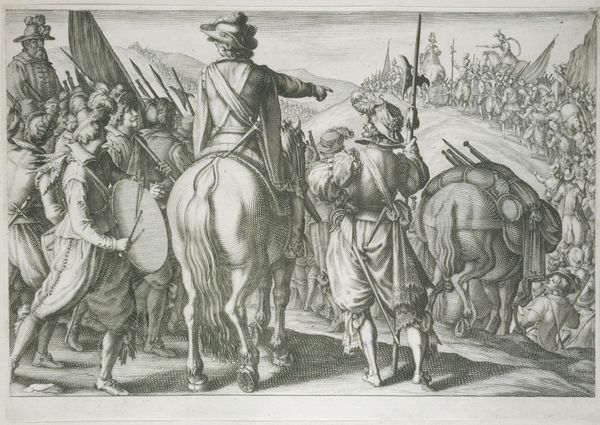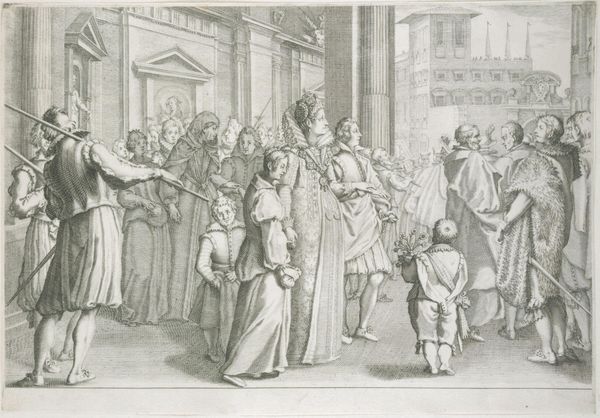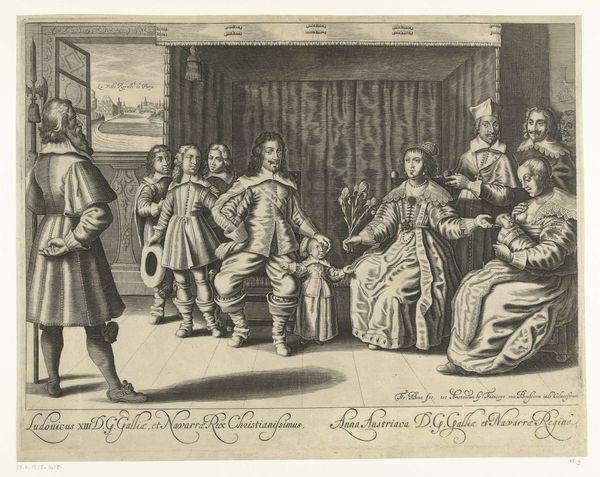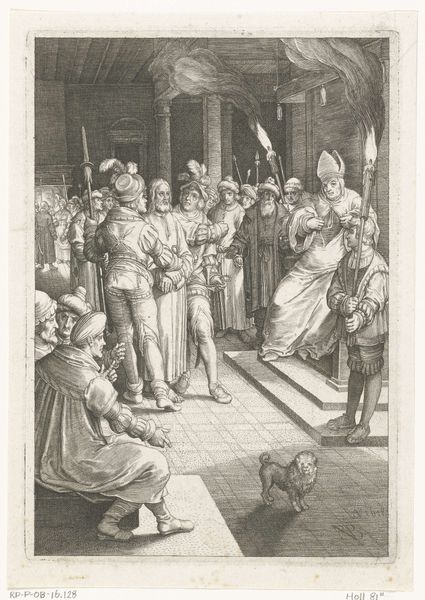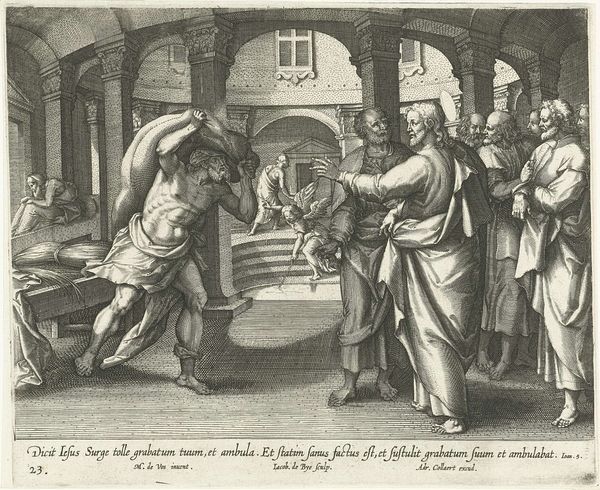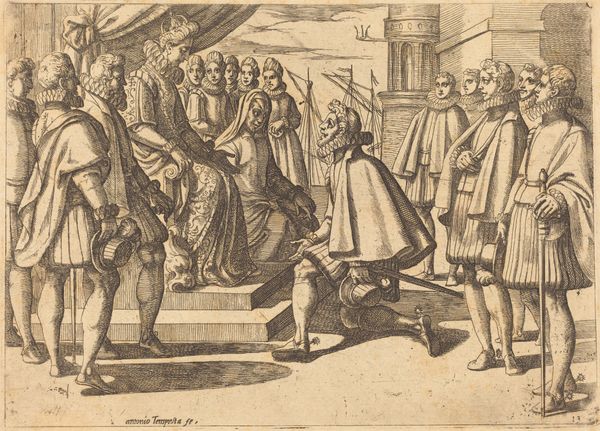
drawing, print, etching, engraving
#
drawing
#
narrative-art
#
baroque
# print
#
etching
#
old engraving style
#
figuration
#
history-painting
#
engraving
Dimensions: height 175 mm, width 253 mm
Copyright: Rijks Museum: Open Domain
Editor: We’re looking at "Joseph Explaining His Second Dream to Jacob," an etching and engraving by Nicolaes de Bruyn, from 1628. It has an old engraving style, doesn't it? It reminds me of looking at old books of prints, and I immediately wonder, what did people see when they saw it for the first time? What strikes you about the work? Curator: The print is predominantly about its composition. Note how de Bruyn organizes figures in distinct groupings and planes. Those entering on the left side visually counter-balance those grouped on the right. Consider the implied lines—where do your eyes travel within this scene? Editor: I see. My eye definitely goes to Joseph in the center, because he’s making a gesture, and then to Jacob, seated and listening. Curator: Exactly. De Bruyn manipulates light and shadow to direct our gaze. The figures clustered around Jacob are more heavily shaded, providing a grounding weight, while the celestial imagery in the background establishes a unique dynamic with these groups, contrasting shadow with pure brightness. Note the architectural framing: it is the organizing principle behind these areas of dark and light. Editor: So the technique and arrangement themselves become part of the narrative? It almost feels theatrical, like figures on a stage. Curator: Precisely. This print displays a Baroque sensibility in its attention to dramatic composition, and through semiotics it communicates with gestures and expressions the narrative itself. The use of hatching creates form. Without color to highlight this division the visual structure creates meaning for the viewer. Editor: It's fascinating to consider how much information can be conveyed through lines and arrangement, creating an atmosphere in the piece! It is certainly an interesting effect created by such structural organization. Curator: It really does make us consider how fundamental these elements are to creating a piece of art!
Comments
No comments
Be the first to comment and join the conversation on the ultimate creative platform.
